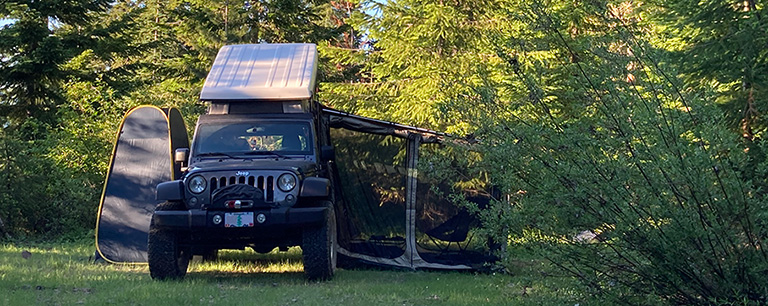The J30 Pop Up Camper from Ursa Minor Vehicles is a complete replacement of the factory soft or hard top, for the 2007 – 2018 Jeep JK Unlimited. Other versions of the top are also available for the later-model Jeep JL Unlimited, Honda Element mini-SUVs and Ford Transit vans.
The major advantages of the J30 over traditional rooftop tents are that it only adds 10-inches to the height of the Jeep and since it is integrated into a complete replacement top, it does not require any additional support system like a roof rack. I had my J30 installed at Ursa Minor’s Sherwood, Oregon facility in February of 2021 and it was the 454th J30 that they had produced, at that time.
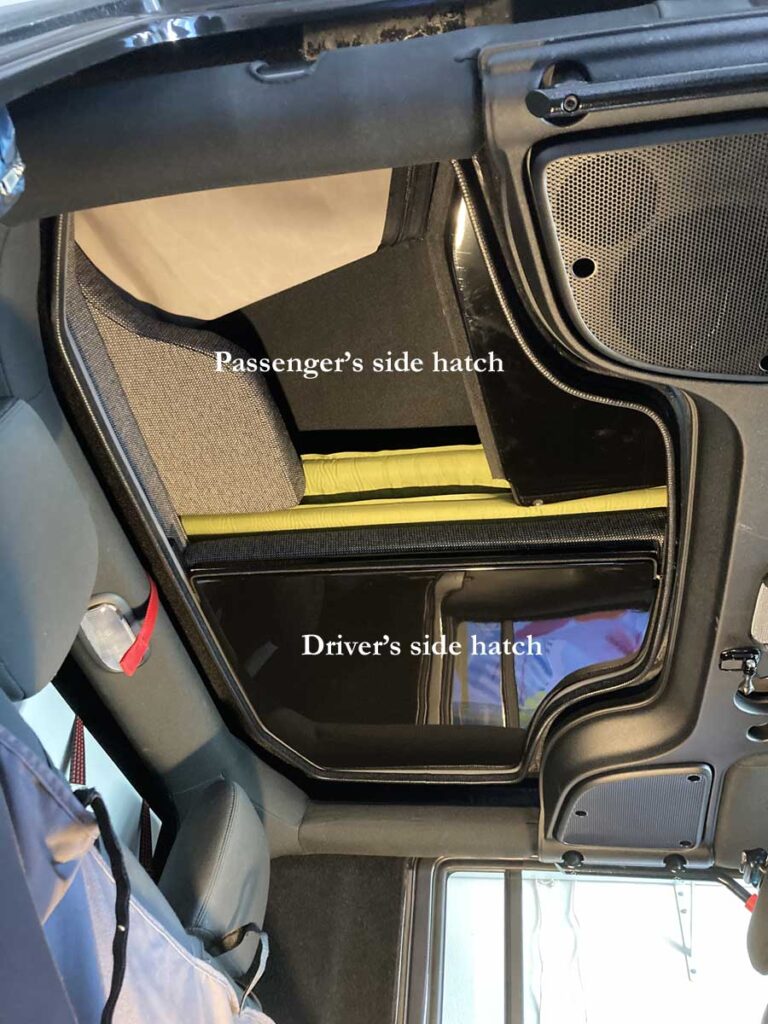
The mattress in the J30 is accessible via a pair of hatches located above the Jeep’s rear seat. It is also accessible from outside via large zippered panels, but you will have to supply your own ladder. Note that unlike rooftop tents, there would be no vestibule or awning over the external entry area to protect you from the elements. And while there is plenty of room inside the J30 for sleeping, there is not much additional room for clothes or shoes.
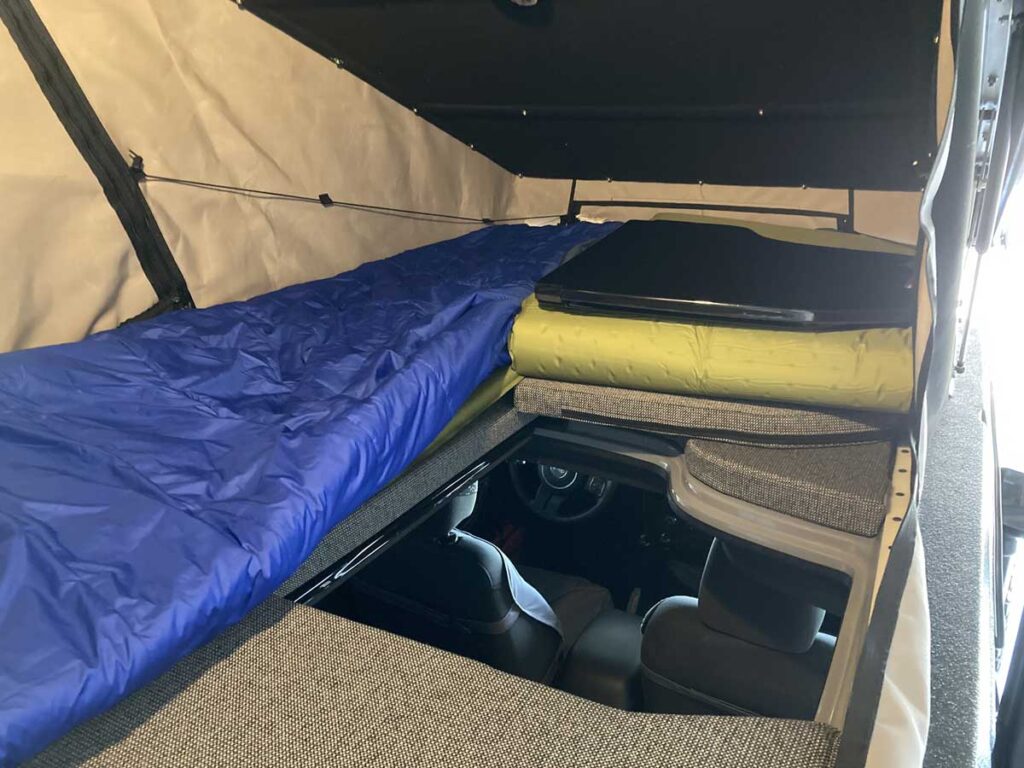
My wife and I both like the internal entry and we find ourselves only using one of the hatches, which lets us leave all of the bedding in place over the second hatch. Rain or shine, the first person can enter the back seat, kick off his or her shoes, then stand on the seat through the open hatch and get dressed for bed. Once snuggled into the sleeping bag, the next person can do the same. It works amazingly well. We do not fold the rear seat down, and use a WeatherTech seat cover to protect it. The WeatherTech is made from a similar type of canvas as the J30, so it holds up really well and is easy to remove and throw in the washing machine. We also use WeatherTech window covers for the windshield and side windows, and store those “up top” in the J30.
You will see in the photo above that we do use air mattresses in the J30. The J30 mattress is hard, which works okay for me, but not for my wife. We augment the mattress with a pair of Sea to Summit CAMP self-inflating mats that are 25-inches wide and 78-inches long. These fit really well on the J30 mattress which is 85-inches long and 51-inches wide.
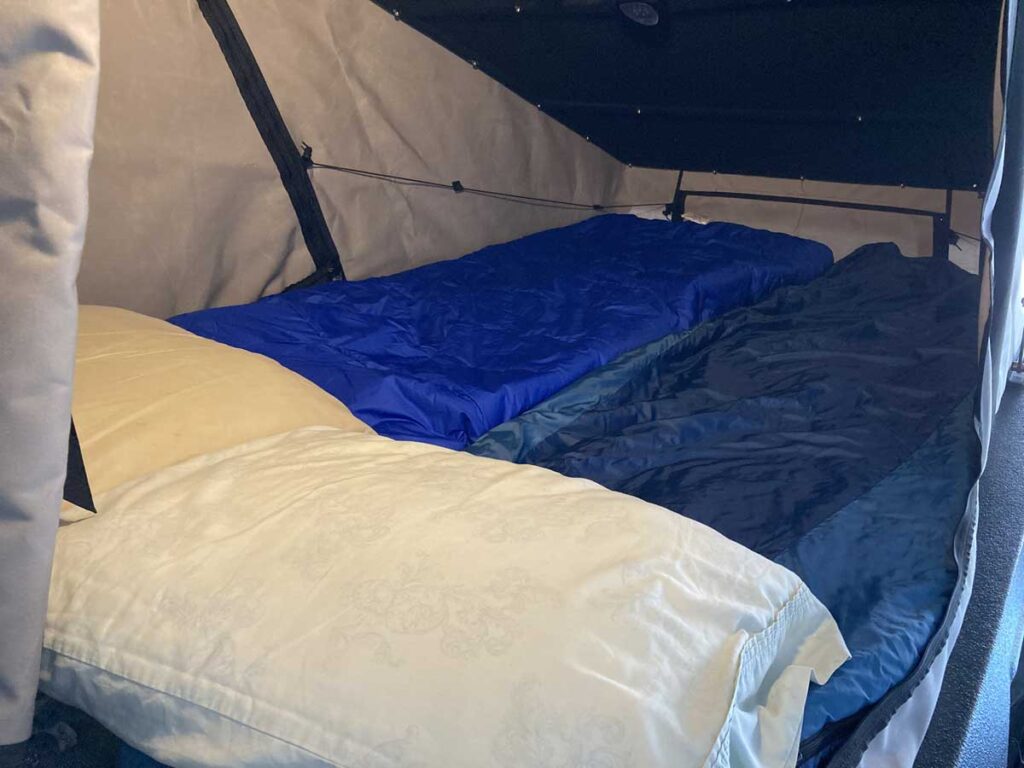
Update: I was on the Oregon Backcountry Discovery Route recently and ran into a fellow Ursa Minor J30 owner from San Diego who had one of the new models and they now have 3-inch mattresses! He said that it is very comfortable compared to the older 2-inch mattress.
There is not a lot of room in the J30 when it is folded down. We keep one of the Sea to Summit mats fully-inflated and the other deflated, on top of the inflated one. The canvas sides of the J30 are fairly air-tight, so one of the hatches needs to be open when raising or lowering the J30, in order to allow air to enter the tent when it is being raised, or be expelled when the tent is being lowered. Believe me, the first time that you forget to do this, you will know it immediately!
The important thing to know is that however you arrange your sleeping gear, you have to account for one of the hatches being open, so the tent can be raised or lowered. Full-width sleeping mats or sleeping bags are probably not ideal, with the J30. The air-tight canvas on the J30 is a real plus when camping, though. On one of our recent trips it was fairly chilly and the winds were gusting to 30 MPH, but there was no incursion into the J30 and we slept great!
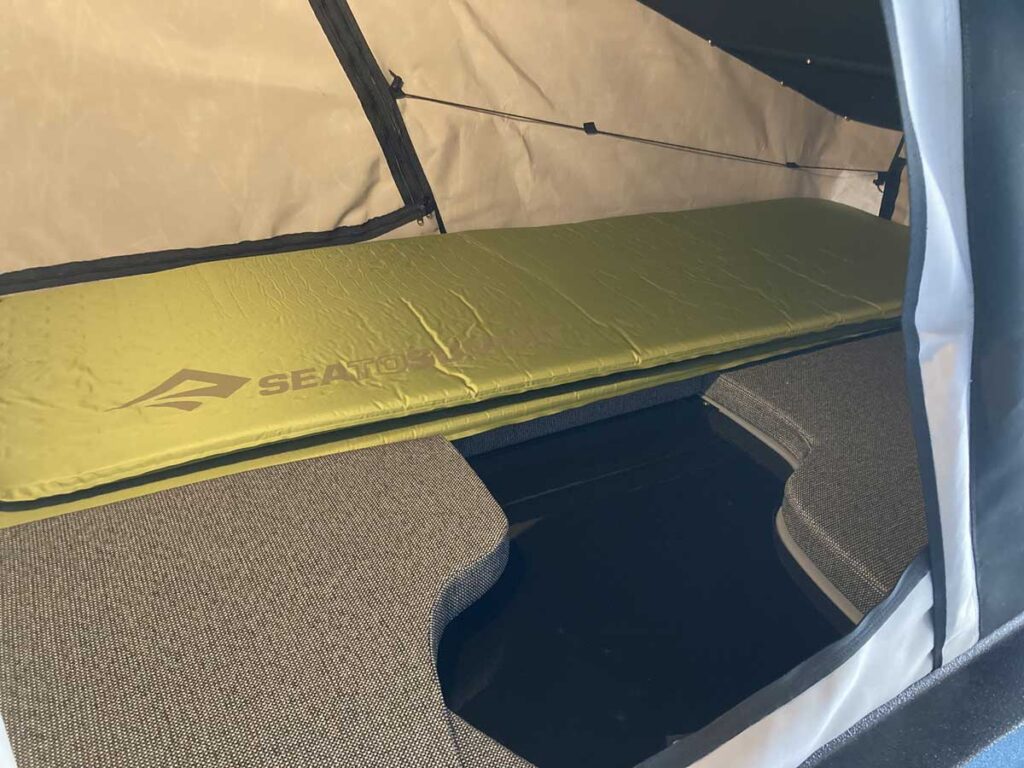
Without the mats, we could keep both sleeping bags in the J30 when it is folded up, but I find it easier to leave the mats “up top” and store the sleeping bags in the back of the Jeep. This is the primary reason that I went with the 1 ½ inch thick Sea to Summit mats over thicker ones, but we have found these to be perfectly comfortable with the J30 mattress. Either way, there is not enough room for pillows. I am still searching for the perfect “camp pillow” that we could store up top with the mats but until I find it, we use regular, full size pillows and stow those in the back of the Jeep.
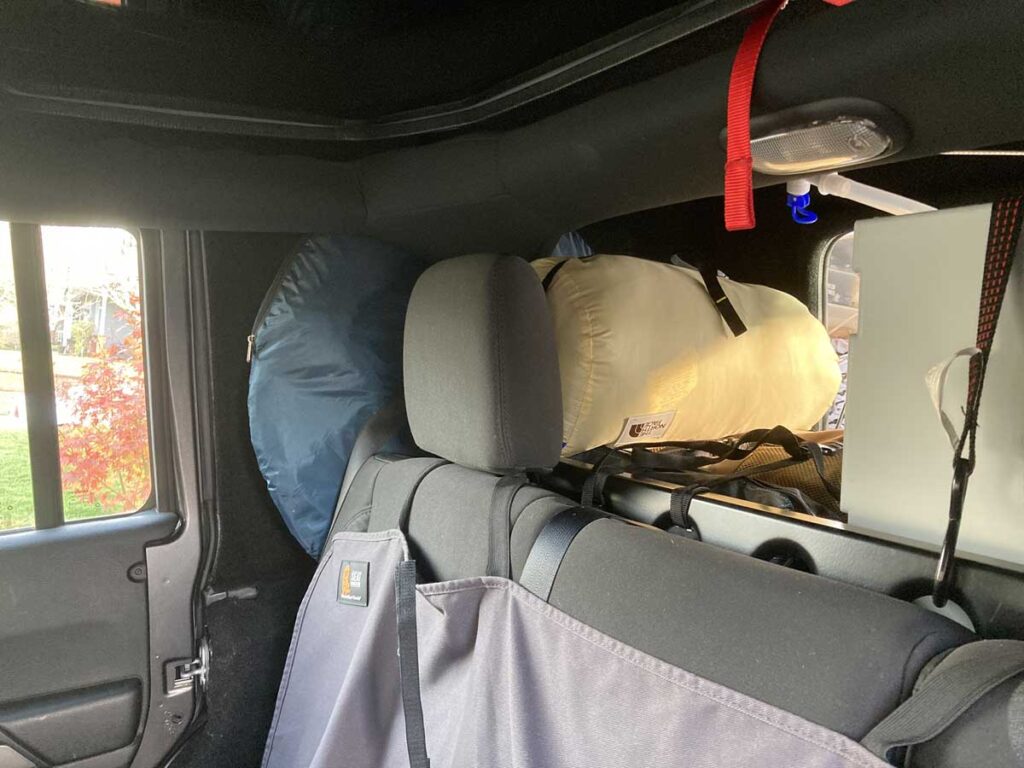
If you follow the link to Ursa Minor’s website and select the “customize and add to cart” button, you will see all of the options available for the J30. Ours came in at $9,020 and I do not think that I would change anything, after having used it for almost a year. Major additions were $900 for the ARB awnings, the $175 “Convenience Power Package” and the $150 “Navigator Headliner Organizer” which are all pretty useful.
The canvas is thick enough to keep the tent pretty dark even during daytime, so it is nice to be able to hit the dome light when you stand up inside the tent. The $175 power package option includes a center dome light on the ceiling of the J30 and two flexible-stalk reading lights on either side. We did not do the “Rear Load Bay LED Lighting” or the rear quarter windows. A lot of people seem to get hung-up over the rear quarter window option, but as you can see in the photo above, if you camp in your Jeep that area is packed with gear. A window in that location is not going to help, much.
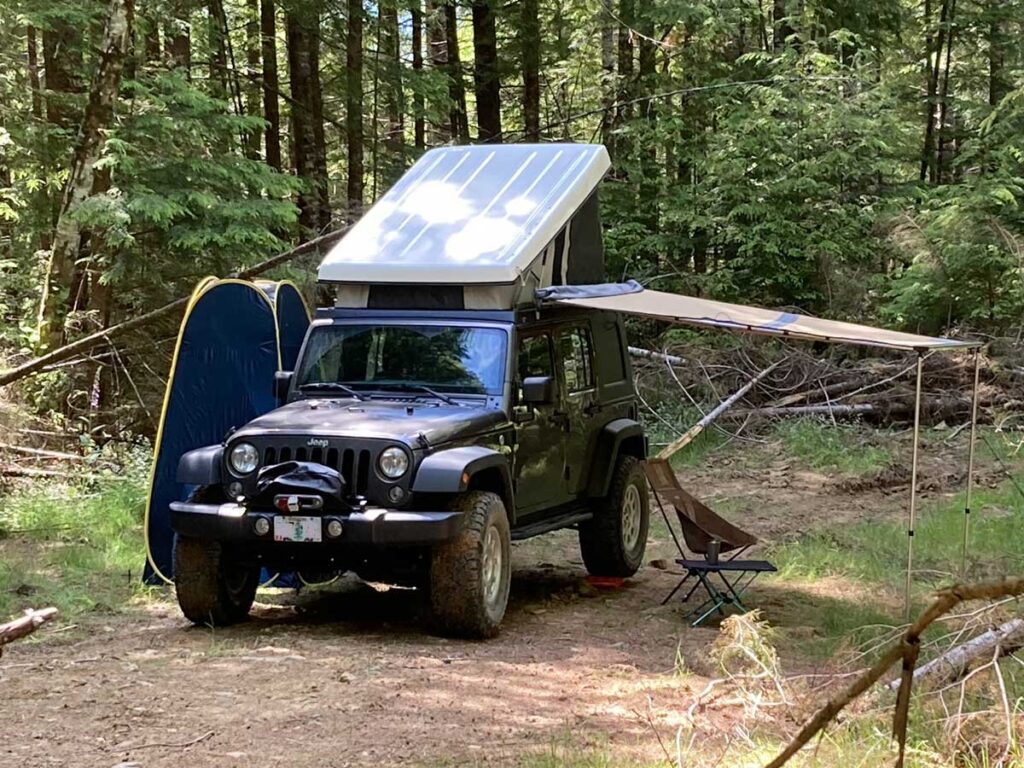
The big hitters when you choose your individual J30 build are the awnings and the roof rack. I actually would have liked to include the Yakima or Thule rack mounts, but we do not have a lot of overhead garage space and I was worried that the mounts might be too tall. For reference, my Jeep with 35-inch tires and a 2 ½ inch lift, measures 82 ½ inches to the tallest point of the J30.
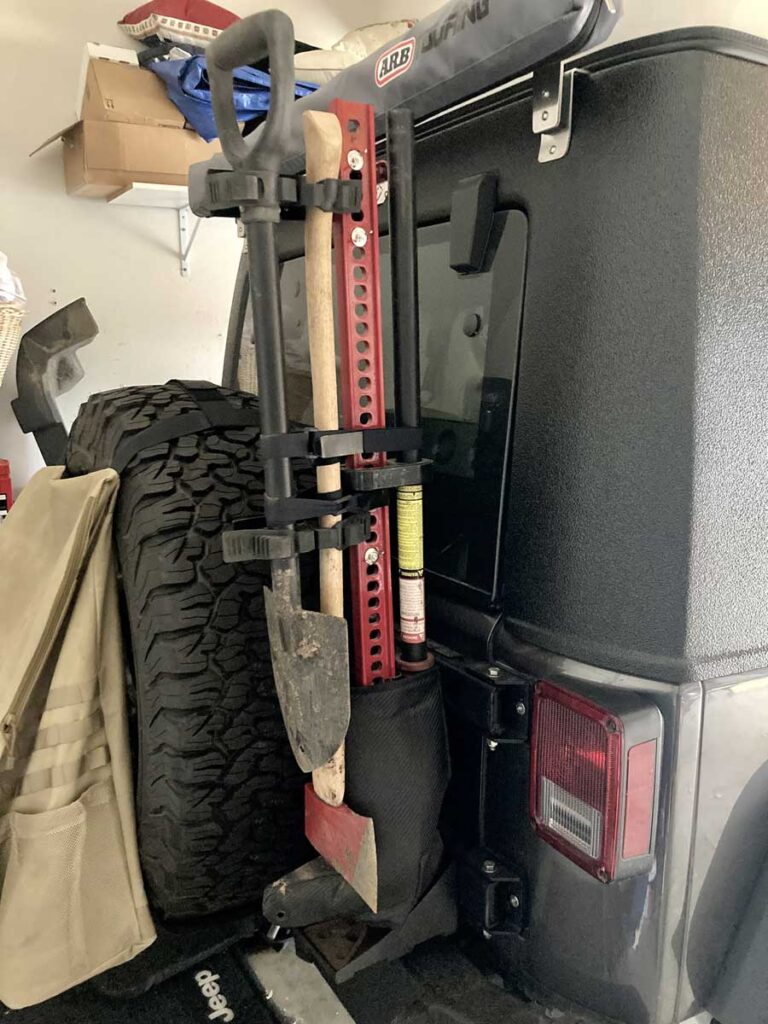
Note that if you have a Hi-Lift mounted in the back, a 42-inch bar is the longest that will clear the rear awning, when it is extended. You will want to add the ARB “windbreak” for the small rear awning and the ARB awning room accessory for the side awning. Neither of these options are available from Ursa Minor. Those will be another $500 or so, but that is an expense that can come at a later date. As-is, the installed awnings work just fine to expand the camping space of the Jeep, but the additional awning room accessory basically adds a 6 ½ foot by 8 foot enclosed room (solid walls or screen walls) to the side of the Jeep and that is a really useful space, which is easily accessible from inside or outside the Jeep.
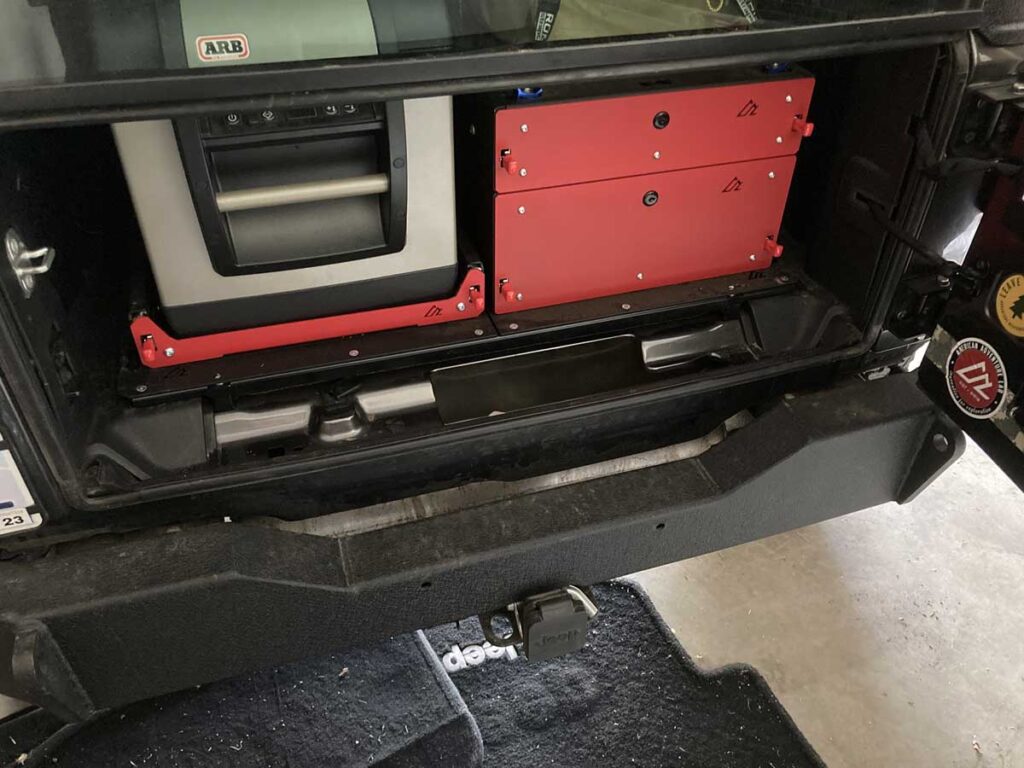
Also of note with the Ursa Minor J30 is that raising and lowering the top is performed from the back of the Jeep, so some kind of step is going to be required. I have an aftermarket rear bumper which provides a nice wide surface to stand on. Other options would be a hitch-mounted step. Either way, just know that you will need to be able to stand up on the back of the Jeep, in order to raise and lower the J30.

We have had several RV’s over the years, including a 26-foot trailer and a 28-foot Class C. The Jeep is for sure a different animal that does not limit us to developed campgrounds, but still provides us with plenty of comfortable sleeping space. When we had RVs, we needed the extra space for our three children, but now that it’s just the two of us the Jeep provides almost everything that our RVs did. Of course it is a bit more primitive, but we get much more enjoyment out of camping in the primitive areas which we never would have been able to reach, in our RVs.
Are there other ways to slay this dragon? Certainly rooftop tents are much more affordable than the J30, even accounting for the additional roof rack required to support them. They are taller, though, and their optional vestibule rooms are not nearly as versatile or spacious, as the ARB awning room (admittedly an extra expense, over the J30). Weight is about a wash. The J30 is 250 lbs. which is 175 lbs heavier than the factory hard top. Rooftop tents start at 100 lbs. but you still have the weight of the support system and, of course, the factory hard top (or a much heavier support system if using a soft top).
Small trailers are another option, but the price point is higher than a J30 and then, of course, you have a trailer behind the Jeep to deal with (and store when it is not in use). A big advantage of the trailers, though, is that there is very little setup and a lot of gear that would normally be stored in the Jeep, can now be stored in the trailer. My Jeep is not a “daily driver” but when I do have to use it for normal duties, I have to remove all of the gear from the outside that could easily be stolen. If my Jeep was more of a daily driver, I could definitely see some advantages to using a trailer. I do not think that I would enjoy it so much offroad, though!
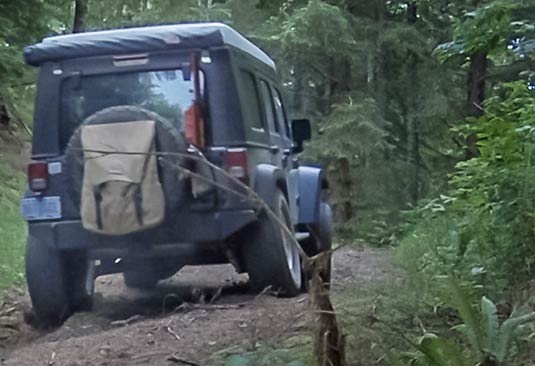
The J30 is without a doubt one of the greatest inventions ever made, for the Jeep JK (and JL). Whether it is right for you depends on how you want to use your Jeep. Certainly overkill for a single overnight trip into the back country, but invaluable for multiday excursions where tenting can become more of a chore than an escape. The build quality befits the J30’s price tag, all across the board. My Jeep had a soft top, but I have to think that the J30 makes the Jeep even quieter than a factory hard top, since there is a lot more insulation up-top. It does not handle quite as well as my soft top did (+250 lbs of weight), but it is a lot quieter and still an extremely comfortable travel vehicle. Offroad, the J30 is like it is not even there. The only thing that I really have to consider is the ARB awning that sticks-out, on the driver’s side. You can order the awning on either side, but for me it is easier to keep an eye on it, with it being on the driver’s side. A lot of the offroad tracks here in the Pacific Northwest are very tight.
As always, if you have any questions or comments hit me up on Twitter and I will be happy to help in any way that I can.
